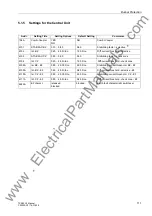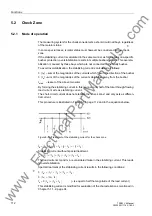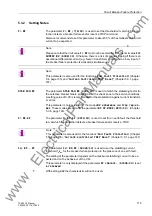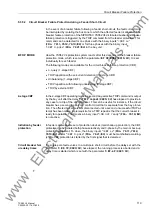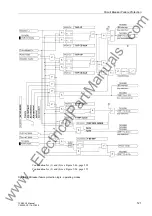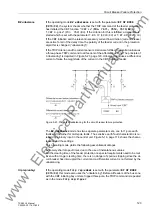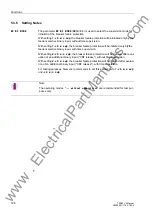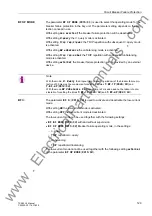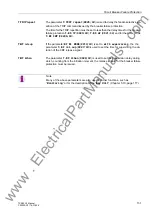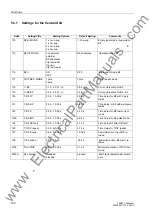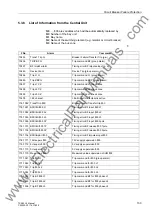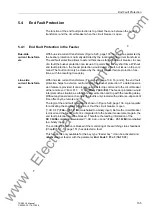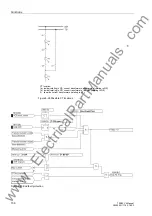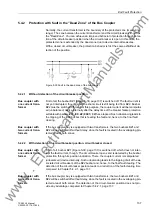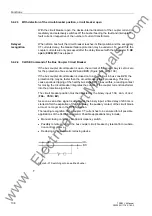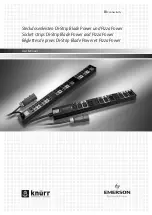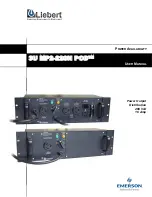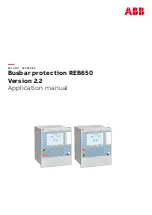
Circuit Breaker Failure Protection
123
7SS52 V4 Manual
C53000-G1176-C182-3
If the operating mode
is set with the parameter
(
XX15/CU
), the system checks whether the TRIP command of the feeder protection
has initiated the CBF function "
>CBF Lx
" (
FNo. 7611, 7612, 7613/BU
) or
"
>CBF 3-pole
" (
FNr. 7621/BU
). If the criterion for this is fulfilled, a delay time is
started which is set with the parameter
(
XX20/CU
) or
XX21/CU
).
If the CBF initiation and the relevant necessary current flow criterion (current release)
are active for all of the delay time, the polarity of the feeder current in the protection
algorithm is changed (”unbalancing").
If the TRIP criterion and the current sensor criterion are fulfilled, the central unit issues
a three-phase TRIP command to all feeders of the affected bus zone.The principle of
”unbalancing” is depicted in Figure 5-23, page 123. Unbalancing causes a differential
current of twice the magnitude of the current in the CBF initiating feeder.
Figure 5-23 Principle of unbalancing for the circuit breaker failure protection
The
mode has two separate parameter sets, one for 1-pole earth
faults and the other for multi-pole faults. The sensitive earth fault characteristic is re-
leased by a binary input in the central unit. Figure 5-16, page 114 shows the charac-
teristics and the settings.
This operating mode yields the following essential advantages:
Extremely short dropout times due to the use of instantaneous values.
For the clearing time of the feeder protection no special requirements need to be met.
Even with a longer clearing time, there is no danger of spurious tripping since the cir-
cuit breaker has interrupted the current and a differential current is not formed by the
unbalancing.
If the operating mode
is set with the parameter
(
XX15/CU
), this mode also uses the "unbalancing". Before all feeders of the bus zone
with the CBF initiating bay unit are tripped three-pole, the TRIP command is repeated
as in the mode
www
. ElectricalPartManuals
. com



